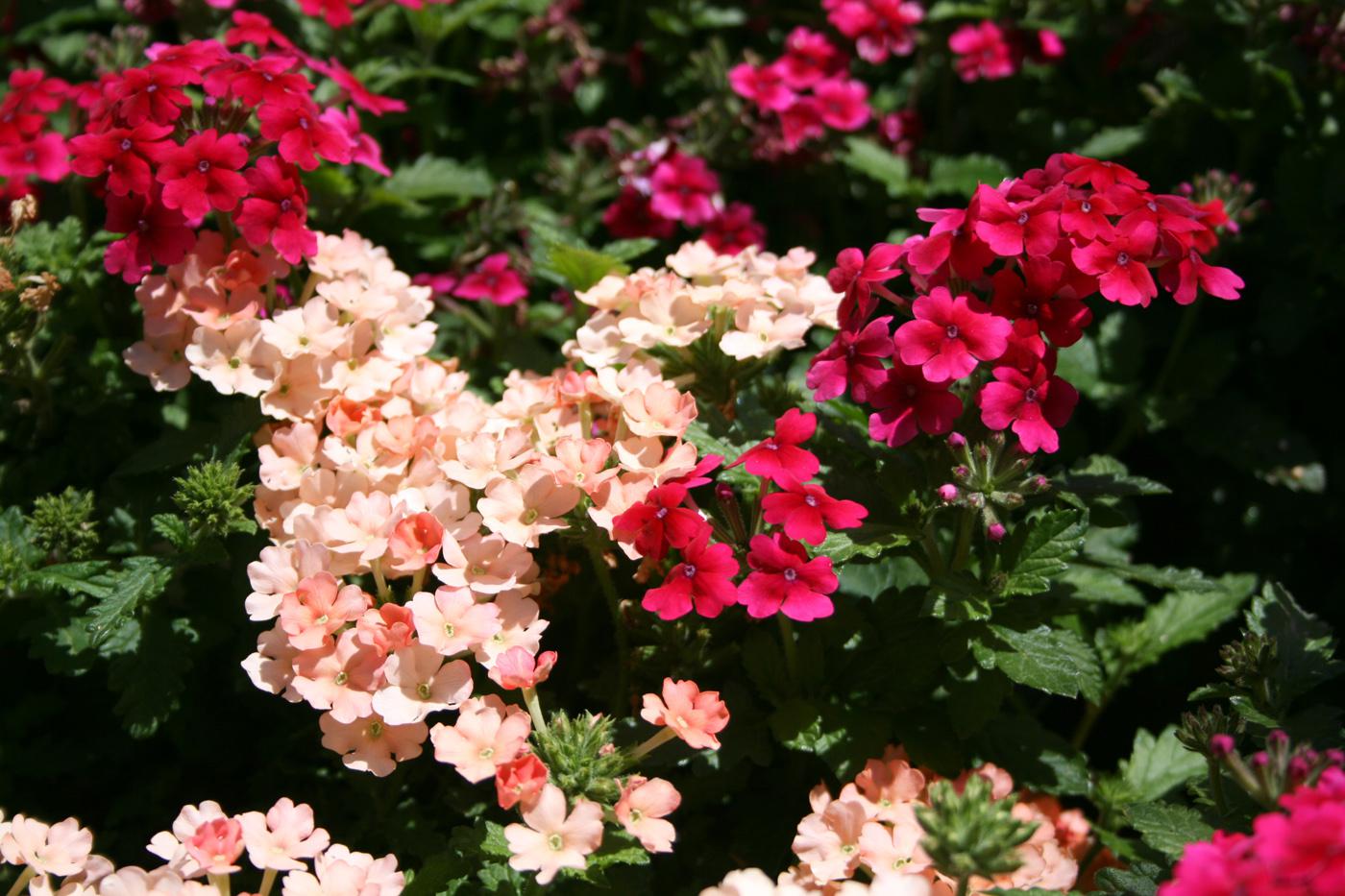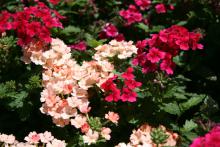Information Possibly Outdated
The information presented on this page was originally released on May 27, 2010. It may not be outdated, but please search our site for more current information. If you plan to quote or reference this information in a publication, please check with the Extension specialist or author before proceeding.
Well-tended verbenas give long-season color
Verbenas are great flowering plants that have been garden staples for many years. They will provide you with three seasons of color if you provide a few necessities for them.
There are more than 250 species of verbenas with many native to the New World. Breeders have been hard at work, and most new selections bear little resemblance to their forbears.
Verbena stems are four-sided and release a faint, spicy aroma when gently brushed. Flowers are displayed in terminal clusters and held above richly green, toothed foliage. The typical range of colors includes red, purple and white, with yellow, orange and peach available in newer varieties. Some selections have white or creamy eyes in the center.
Newer selections have strong lateral growth characteristics, making these good choices for hanging baskets or groundcovers in the landscape.
Verbena’s performance and versatility have been noted twice by the Mississippi Medallion program. The first Medallion selection was Biloxi Blue verbena in 1999. This selection has round panicles of purple-blue flowers that bloom throughout spring and summer.
In 2004, the Port Gibson Pink verbena was selected as a Mississippi Medallion winner. Its fragrant pink and white flowers attract many butterflies in the spring and summer. Plant Purple Ruffles Basil, another 2004 Medallion winner, as a companion plant with this variety.
The Superbena series from Proven Winners is vigorous and heat tolerant. These plants will get up to 12 inches tall and spread up to a whopping 48 inches. The wide variety of colors includes burgundy, coral red, dark blue, large lilac blue, pink parfait, purple and royal red. The trailing habit makes Superbenas great for baskets and landscape beds.
Another good verbena series is the Turkana. The colors include raspberry, scarlet, scarlet-star and white, and these 4- to 8-inch-tall plants trail out 24 inches. They are good choices for hanging baskets.
If you decide to grow your verbenas in the landscape, amend the soil with good, high-quality compost. Work 3 to 4 inches of compost into the landscape bed. Add 1½ pounds of 8-8-8 or 14-14-14 slow-release granular fertilizer for each 100 square feet. For containers, use a high-quality peat-based potting mix. Finish with a couple of tablespoons of three-month slow-release 18-6-12 fertilizer.
To get the most out of any verbena planting, be sure to grow it in full sun and provide a consistent source of irrigation. Meeting these two requirements will give you a floral display that lasts for several weeks.
All of this beauty comes at a price, and the verbena will begin to tire out. When this happens, the center opens up with unsightly, scraggly stems, and it is time to cut the plant back.
Always use a sharp pair of scissors and cut by about one-third to one-half, then sidedress with a little more fertilizer. This will encourage new shoots to grow and produce a fuller plant and more flowers. You may have to cut back several times during the year, especially in the coastal counties.
Try planting a few verbenas in your garden and enjoy their flowering display this summer.








